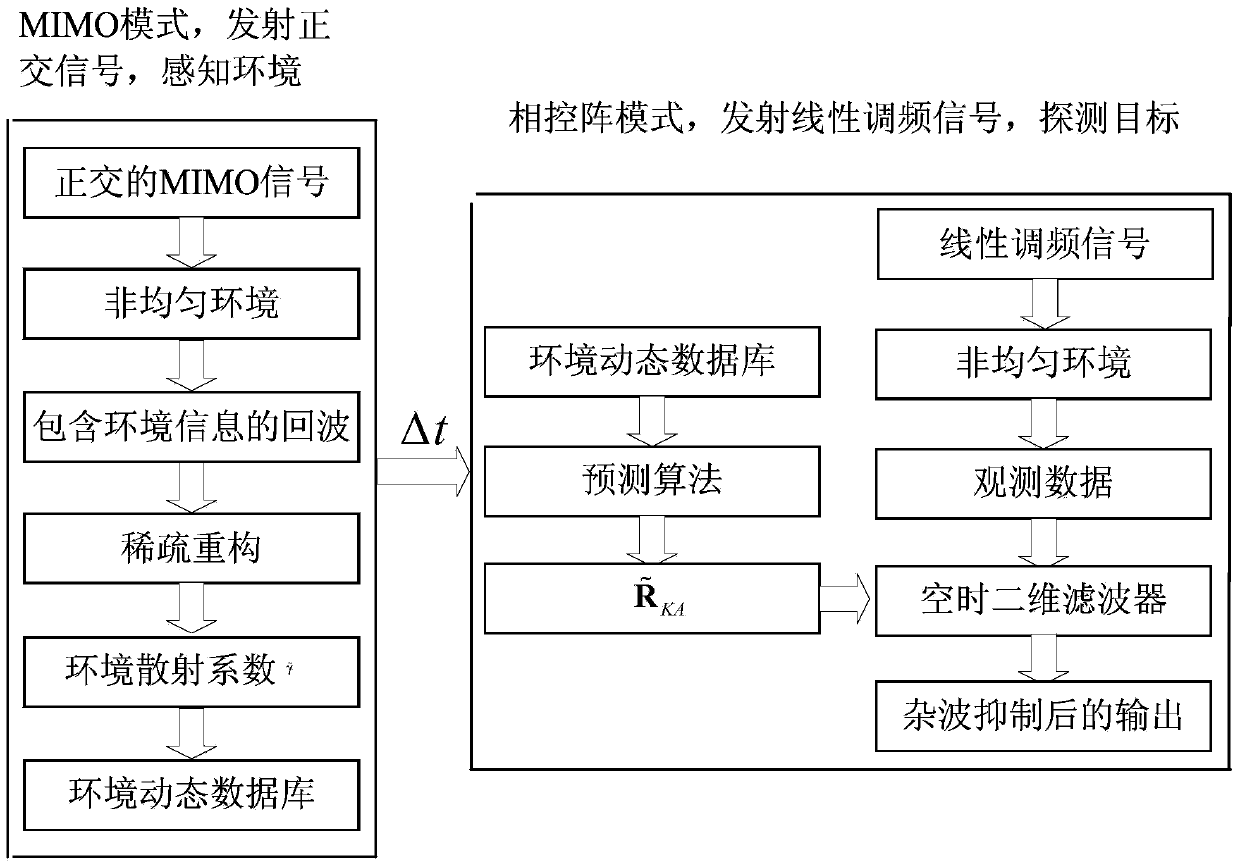Airborne radar space time adaptation processing method based on environment dynamic perception
A space-time adaptive, airborne radar technology, applied in radio wave measurement systems, instruments, etc., can solve the problems of reducing performance, not improving radar clutter suppression performance, prior information mismatch, etc., to improve clutter Effects of inhibiting performance
- Summary
- Abstract
- Description
- Claims
- Application Information
AI Technical Summary
Problems solved by technology
Method used
Image
Examples
Embodiment Construction
[0029] The present invention will be further described below in conjunction with accompanying drawing:
[0030] refer to figure 1 , is a flow chart of the space-time adaptive processing method based on environmental dynamic perception of the present invention. refer to figure 2 , is a schematic diagram of the working principle of the airborne radar in the present invention. The space-time adaptive processing method based on environmental dynamic perception includes the following steps:
[0031] Step 1, set the working mode of the airborne radar to MIMO mode, the transmitting array of the airborne radar transmits signals outward, and the receiving array of the airborne radar receives the time-domain echo signal Y; Y = y 1 y 2 . ...
PUM
 Login to View More
Login to View More Abstract
Description
Claims
Application Information
 Login to View More
Login to View More - R&D
- Intellectual Property
- Life Sciences
- Materials
- Tech Scout
- Unparalleled Data Quality
- Higher Quality Content
- 60% Fewer Hallucinations
Browse by: Latest US Patents, China's latest patents, Technical Efficacy Thesaurus, Application Domain, Technology Topic, Popular Technical Reports.
© 2025 PatSnap. All rights reserved.Legal|Privacy policy|Modern Slavery Act Transparency Statement|Sitemap|About US| Contact US: help@patsnap.com



